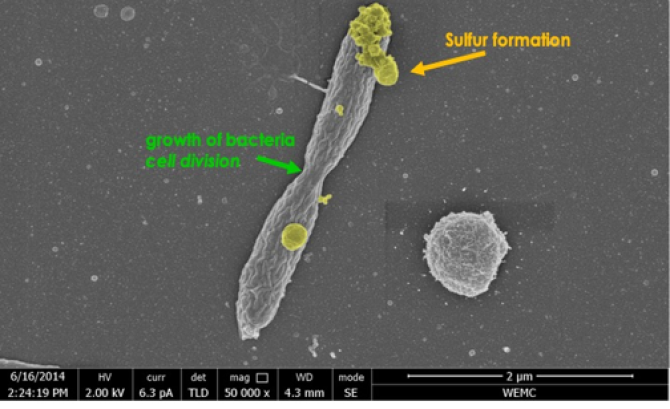
Nieuws
Best Presentation award for PhD researcher Rieks de Rink
During the online ETE congress Environmental Technology for Impact, held on 3 and 4 June 2020, Rieks de Rink won the award for ‘best presentation’ for his talk Innovations in Biological Gas Desulfurization. From over 500 participants and 50 speakers, the majority voted for his presentation, where he discussed new developments and innovations in biological sulfur removal from industrial gases.
‘The main aim of my research is to make biological processes to remove hydrogen sulfide (H2S) from gas more sustainable and efficient’, de Rink explains. ‘Actually, I presented three innovations and discoveries that help to improve sulfur recovery and reduce chemical, water and energy use.’
The first innovation increased sulfur recovery from gas by preventing H2S to be converted into sulfuric acid (H2SO4). The bacteria responsible for
this conversion decreases sulfur formation by competing for H2S to
make H2SO4. To increase the efficiency, the H2SO4-formation was inhibited in an additional reaction vessel by blocking the bacteria’s enzyme systems, responsible for synthesizing H2SO4. Under conditions without oxygen, and by elevating levels of H2S, the scientists managed to knock out most of the H2SO4 synthesis. In a second reaction vessel, wíth oxygen, the sulfur-forming bacteria now have less competition from the H2SO4-forming bacteria, resulting in a higher conversion of H2S into sulfur. The new process also reduces the use of chemicals (NaOH) as well as the waste stream by about 80-90%, which makes the process more sustainable and attractive for use in the oil and gas industry.
The second discovery was that bacteria already play a role in the H2S
absorber, the very first step of the process. In the absorber, an alkaline
fluid, like sodium bicarbonate), absorbs H2S from the gas and converts it into sulfide, HS-. This HS--containing fluid is then led into the reactors where the different conversions take place and sulfur is eventually formed. ‘We always thought that this absorption step was a purely a physical chemical process’, de Rink explains. ‘But we found out that the activity of the bacteria already play a role here in the removal of H2S from the gas stream.'
The third innovation showed that the bacteria taken from the biodesulfurization process, mainly producing elemental sulfur, can also generate electricity in an electrochemical cell. This offers the possibility to recover energy in the process, making it even more sustainable.
